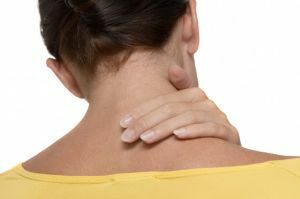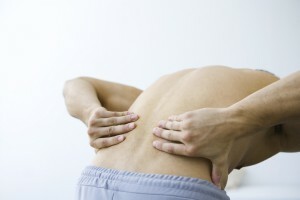 For the first time the symptom of pain in the lower back and sciatic nerve during the bending of a straight leg in the hip region was described by the French doctor Laceg.
For the first time the symptom of pain in the lower back and sciatic nerve during the bending of a straight leg in the hip region was described by the French doctor Laceg.
The syndrome was later named after this physician.
To understand the essence of the syndrome, it is worth paying attention to the biggest nerve of a person - the ischium, which is formed by the roots of the nerves of the spinal cord.
If the traumatic effect or excessive tension of the nerve causes a sharp pain in the person lying on the back, when the limb is trying to lift or bend, then the Lasega tension syndrome appears.
Contents of the article
- Neurological evaluation of
- Syndrome Causes and risk factors
- Degrees of development
- Detection of symptom
- Diagnostic approach
- Diseases provoking the appearance of
syndrome Neurological evaluation of
syndrome This is a test used in this area when a doctor suspects a patient of nervous system diseasesor parts of the spine.
To make a correct diagnosis it is necessary to identify areas with pathology in the spine, in which the body, trying to put the defense, forms blocks and jams the nerve roots while doing so.
Find such a site and try to test the patient for this symptom.
Important rules for the inspection are:
- smooth lifting of the lower limbs;
- stopping the manipulation of the foot even with a slight angle of the leg lift, if pain syndrome appeared;The
- test is performed without prior anesthesia, so that the test results are not distorted.
In medicine, there are concepts of positive and negative symptoms of Lasega. 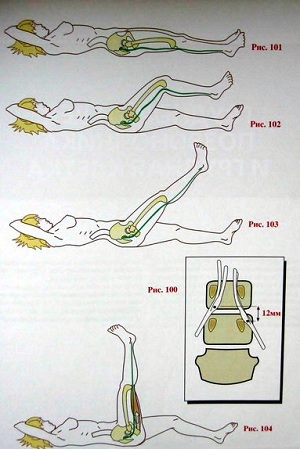
To determine the exact presence of a symptom of tension, you can if the patient takes a position lying on his back. The doctor carefully lifts the patient's leg until the patient feels pain in the sciatic nerve.
The Lasega syndrome may be:
- A positive symptom is recognized if a sensation of pain occurs when the patient's leg is raised by 30 ° in the limb. It passes with a phased bend of the lower limb in the knee and hip joint. This symptom can talk about squeezing the lumbar and sacral roots, which often occurs with osteochondrosis.
- If the pain does not disappear in the process of flexing the leg in the hip or knee area, the Laseg symptom is called negative , and the pain may be caused by the pathology of these limb parts. A patient with such a clinical picture during the examination should be diagnosed additionally to identify the real cause of the pain syndrome.
- Pain in the lower limb is often psychogenic. Often they are observed in hysterical women. In diagnostics, the relationship between leg changes and symptoms is usually not found in the patient. A pseudo-positive symptom can also be diagnosed in a person with weak hamstring muscles. Usually such signs are noted in the elderly.
Practice shows that the appearance of pain when lifting a leg at 70 ° indicates the presence of pathology in the joint. An orthopedic consultation is required, which determines the pathology of the femoral muscles.
Causes and risk factors
The cause of tension syndrome may be the onset of a hernia or osteochondrosis.
Sciatic nerve fibers have a certain amount, so they can not extend indefinitely. And the development of these diseases causes the fibers to overextend, when they round the formed bulges, which leads to the appearance of pain from the pathology.
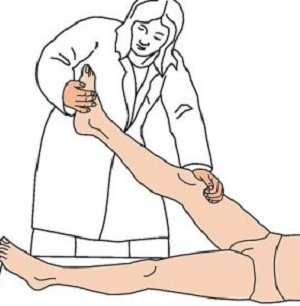 If the fall occurs, the pain is felt in the thigh and lower leg.
If the fall occurs, the pain is felt in the thigh and lower leg.
MRI and X-ray examination should be completed.
Risks from the tension of the sciatic nerve are associated with the fact that when it is infringed or shortened due to the intervertebral hernia, destruction of the neural connections is possible.
This can lead to the development of paralysis.
Degrees of development
A study for this syndrome is performed with the patient on the back with the passive movement of his foot in 3 phases:
- raising the leg at an angle of 60 °;
- bending it at the knee joint by 45 °;
- flexing in the knee joint( angle 30 °).
The severity of the tension syndrome is determined by 3 degrees:
- First degree .It is characterized by weak soreness that occurs when the lower limb is raised at an angle of 60 ° under the
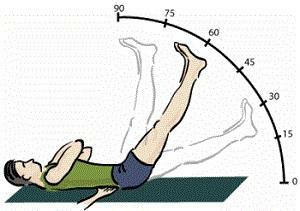 .
. - Second degree .The pain appears with a raised leg at 45 °, the vegetative response will be moderate. Individual muscles abruptly contract.
- Third degree .When the limb is raised at 30 °, there is a strong contraction of the muscles, a vegetative reaction manifests itself in a sharp form.
Symptom Detection
The clinical picture of the tension syndrome manifests itself as a consequence of a malfunction in the nerve endings of the sacral plexus or the roots of the spinal cord.
Symptoms, depending on the degree, are as follows.
A symptom is considered positive if in the first phase of the direction of the straight leg, an intense pain appears at an angle in the outer or back part of the shin or thigh, in the next phase, the pain disappears or decreases, and then the pain senses appear again.
Feature is the disappearance of pain, when the knee or hip joint is bent. This is due to the relaxation of certain roots.
Physicians have the following symptoms that indicate the patient's Lasega syndrome:
- painful sensations when raising the lower limb;
- , when knee and hip joints are bent, the pain stops;
- with a raised healthy limb, the pain is felt in the aching leg( cross symptom);
- during the test, the skin of the front of the thigh becomes numb.
Diagnostic approach
Doctors never diagnose only on the basis of a test, because people have a different threshold of pain sensitivity. To obtain more reliable information, this test is combined with the symptom of Bechterew-Fierstein.
When the pathological signs of the sciatic nerve tension revealed after the tests are determined, the neurologist directs the patient to an additional examination using the methods of hardware diagnostics.
Assigning examinations using computer and magnetic resonance imaging or X-ray examination of the spine. Due to this, the diagnosis is established most reliably.
Diseases provoking the appearance of
syndrome. To diseases when the sciatic nerve comes in a strained state, include:
- Vertebral osteochondrosis in the lumbar region of .This is the most common cause of the appearance of Lasega's symptom. Pain is the result of a pinched S1 vertebra. With osteochondrosis, there is numbness of the skin in the area where pain is felt, which shoots into the buttock area.
- Sciatic nerve injury .Pain throughout the nerve is called ishalgia. The possible cause of the disease are
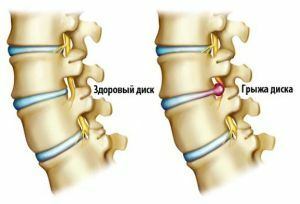 infection, diabetes, intoxication.
infection, diabetes, intoxication. - Bechterew's disease .It is characterized by pain caused by the deposition of calcium salts in the ligaments of the spine.
- Lumbosacral sciatica .To the signs of tension, a cross symptom is added( pain in the limb is noted with a raised healthy leg) and Neri's symptom( low back pain is associated with the bending of the head).
- The syndrome can manifest itself with herniated intervertebral discs, negative changes in the muscles of the thigh, joints, tumors .
Treatment of diseases associated with Lasega's symptom consists of drug therapy with pain medication, physiotherapy procedures, acupuncture, use of orthopedic corrective agents.
The pain blockades with anesthetics help to relieve pain painfully, and after manual relief of the patient's condition, manual therapy is applied only on the recommendation of a doctor.
The identified positive result is the initial link in assessing the patient's condition in the complex. It allows you to pay attention to the appearance of pathological processes in the body, determine the focus of the lesion and begin its treatment.

